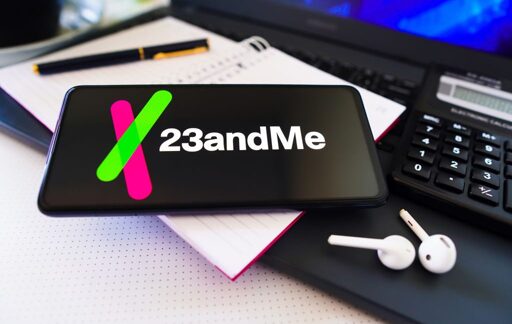American attitudes about AI today mirror poll answers about the rise of the internet in the '90s
-
This post did not contain any content.
-
This post did not contain any content.
the internet is actually useful and serves a purpose.
ai isn't useful at all and has no purpose.
-
This post did not contain any content.
It's the same sentiment towards immigrants that's seen on the right.
The media have been running the exact same headlines. It feels weirdly like the corporate run media have an agenda to show us all the horrors of AI like they will take our jobs, they are going to collapse our society, they are a threat to our children, they contribute to organized crime. Same headlines every time.
I anticipate people here will be bothered by this statement just like if you say immigration isn't really a big problem in r/conservative. The media is insidious. But I really think it's a good opportunity to see how it shapes public opinion.
-
the internet is actually useful and serves a purpose.
ai isn't useful at all and has no purpose.
It is very useful, just only in very few circumstances. 99% of what people are shoving it into, it has no place being there, but there are some things that it legitimately just does better.
-
the internet is actually useful and serves a purpose.
ai isn't useful at all and has no purpose.
AI is very useful and powerful as a propaganda device and a system to generate and disseminate disinformation, misinformation and non-information very quickly and very efficiently.
It was thought that the internet would do the same but that system only goes at the speed of humans and the whole system is regulated by humans ... so as propaganda tool, it has worked better but not as well as predicted. Humans saw the the potential for abuse and fought back against it.
AI is like propaganda on cocaine ... and there is very little to stop it other than our awareness of it ... but the majority of everyone in the world don't care to understand what they are watching is real or not. What that means is that AI is set to reshape how everyone thinks and how we all see the world.
-
This post did not contain any content.
Tech itself maybe. But the money, the copyright and the politics. AI is filthy.
-
AI is very useful and powerful as a propaganda device and a system to generate and disseminate disinformation, misinformation and non-information very quickly and very efficiently.
It was thought that the internet would do the same but that system only goes at the speed of humans and the whole system is regulated by humans ... so as propaganda tool, it has worked better but not as well as predicted. Humans saw the the potential for abuse and fought back against it.
AI is like propaganda on cocaine ... and there is very little to stop it other than our awareness of it ... but the majority of everyone in the world don't care to understand what they are watching is real or not. What that means is that AI is set to reshape how everyone thinks and how we all see the world.
We already saw Grok being used for this, though rather clumsily by stuffing the prompt.
If an AI company were behind the scenes fine tuning on specific political sentiment you would never know.
In fact there’s some evidence that later ChatGPT models are more right wing biased than early models (which were accused of being left wing).
Also important to note how much social media gets fed into these things and how astroturfed modern social media is these days, so even if not explicitly biased the well has been poisoned.
-
the internet is actually useful and serves a purpose.
ai isn't useful at all and has no purpose.
Are you not self aware at all? Who do you think the article is about?
-
It's the same sentiment towards immigrants that's seen on the right.
The media have been running the exact same headlines. It feels weirdly like the corporate run media have an agenda to show us all the horrors of AI like they will take our jobs, they are going to collapse our society, they are a threat to our children, they contribute to organized crime. Same headlines every time.
I anticipate people here will be bothered by this statement just like if you say immigration isn't really a big problem in r/conservative. The media is insidious. But I really think it's a good opportunity to see how it shapes public opinion.
I find this false equivalence pretty disgusting.
-
This post did not contain any content.
Search sucks now, LLMs are useful. Not as useful as tech companies claim it to be but yeah, most people will use it at some point.
-
This post did not contain any content.
Comparing these two technologies seems somewhat silly
-
It's the same sentiment towards immigrants that's seen on the right.
The media have been running the exact same headlines. It feels weirdly like the corporate run media have an agenda to show us all the horrors of AI like they will take our jobs, they are going to collapse our society, they are a threat to our children, they contribute to organized crime. Same headlines every time.
I anticipate people here will be bothered by this statement just like if you say immigration isn't really a big problem in r/conservative. The media is insidious. But I really think it's a good opportunity to see how it shapes public opinion.
That’s intentional. They sensationalize to desensitize. Unlike the introduction of computers or the internet, AI will absolutely take far more jobs than it will create. Goldman Sachs predicts a 50% reduction in US jobs by 2045, and Republicans added a provision into the budget reconciliation that prohibits any regulation on AI for a decade, to ensure that prosperity goes to the corporations.
-
I find this false equivalence pretty disgusting.
That might actually reinforce my point
-
That’s intentional. They sensationalize to desensitize. Unlike the introduction of computers or the internet, AI will absolutely take far more jobs than it will create. Goldman Sachs predicts a 50% reduction in US jobs by 2045, and Republicans added a provision into the budget reconciliation that prohibits any regulation on AI for a decade, to ensure that prosperity goes to the corporations.
I've learned of one interesting pathway from ancap to socialism long ago, as you might have guessed, through Georgism, but more generally - every finite resource that can't be produced, like territory and laws of nature, shouldn't be owned and should be considered common property shared by communist means. What can be produced is private property without limitations.
Thus you can own guns, tanks, jets and air carriers, but you shouldn't be able to fully own territory and patents, because that eventually leads to legally reinforced monopoly.
I think there's a logical connection from that to what our future looks like and how it will have to be resolved. Unless we want a caste society.
-
That’s intentional. They sensationalize to desensitize. Unlike the introduction of computers or the internet, AI will absolutely take far more jobs than it will create. Goldman Sachs predicts a 50% reduction in US jobs by 2045, and Republicans added a provision into the budget reconciliation that prohibits any regulation on AI for a decade, to ensure that prosperity goes to the corporations.
I would have no problem getting anyone at r/conservative to pull up similar data points and statistics to show immigrants are taking jobs, contributing to crime statistics or any other claim. It's very eerily similar to the emerging opinion on the left when compared to opinions on the right towards immigrants.
Regardless of validity of opinion. What I'm noticing is the role the media has played on shaping opinion and fed it.
-
the internet is actually useful and serves a purpose.
ai isn't useful at all and has no purpose.
That’s what they said about the internet in its infancy.
-
AI is very useful and powerful as a propaganda device and a system to generate and disseminate disinformation, misinformation and non-information very quickly and very efficiently.
It was thought that the internet would do the same but that system only goes at the speed of humans and the whole system is regulated by humans ... so as propaganda tool, it has worked better but not as well as predicted. Humans saw the the potential for abuse and fought back against it.
AI is like propaganda on cocaine ... and there is very little to stop it other than our awareness of it ... but the majority of everyone in the world don't care to understand what they are watching is real or not. What that means is that AI is set to reshape how everyone thinks and how we all see the world.
I've used it to learn how to read sheet music and help learn other skills I normally wouldn't be able to.
-
I would have no problem getting anyone at r/conservative to pull up similar data points and statistics to show immigrants are taking jobs, contributing to crime statistics or any other claim. It's very eerily similar to the emerging opinion on the left when compared to opinions on the right towards immigrants.
Regardless of validity of opinion. What I'm noticing is the role the media has played on shaping opinion and fed it.
The media is very predictable for sure. They put on the rose-colored glasses for the pro argument, and sensationalize the worst fears for the con. Historically, the truth lands in the middle.
Unlike the topic of immigration, with the massive wealth inequality of today, anything benefiting corporations over the working class is far more likely to work out in their favor.
-
I've learned of one interesting pathway from ancap to socialism long ago, as you might have guessed, through Georgism, but more generally - every finite resource that can't be produced, like territory and laws of nature, shouldn't be owned and should be considered common property shared by communist means. What can be produced is private property without limitations.
Thus you can own guns, tanks, jets and air carriers, but you shouldn't be able to fully own territory and patents, because that eventually leads to legally reinforced monopoly.
I think there's a logical connection from that to what our future looks like and how it will have to be resolved. Unless we want a caste society.
Geoffrey Hinton agrees.
-
I've used it to learn how to read sheet music and help learn other skills I normally wouldn't be able to.
I've used it to figure out a button on a vintage calculator which had multiple humans give up assuming it's broken. Neither I, nor the AI knew what it was for but I could use it as a very willing conversation partner that didn't grow tired of trying new things.
I've had it help me come up with an effective deep fry batter that fit my exact needs and gave a perfect result.
It's usefulness is limited in many respects but if you have a rough idea of what you're talking about it will (mostly) be helpful. Until it forgets things.






